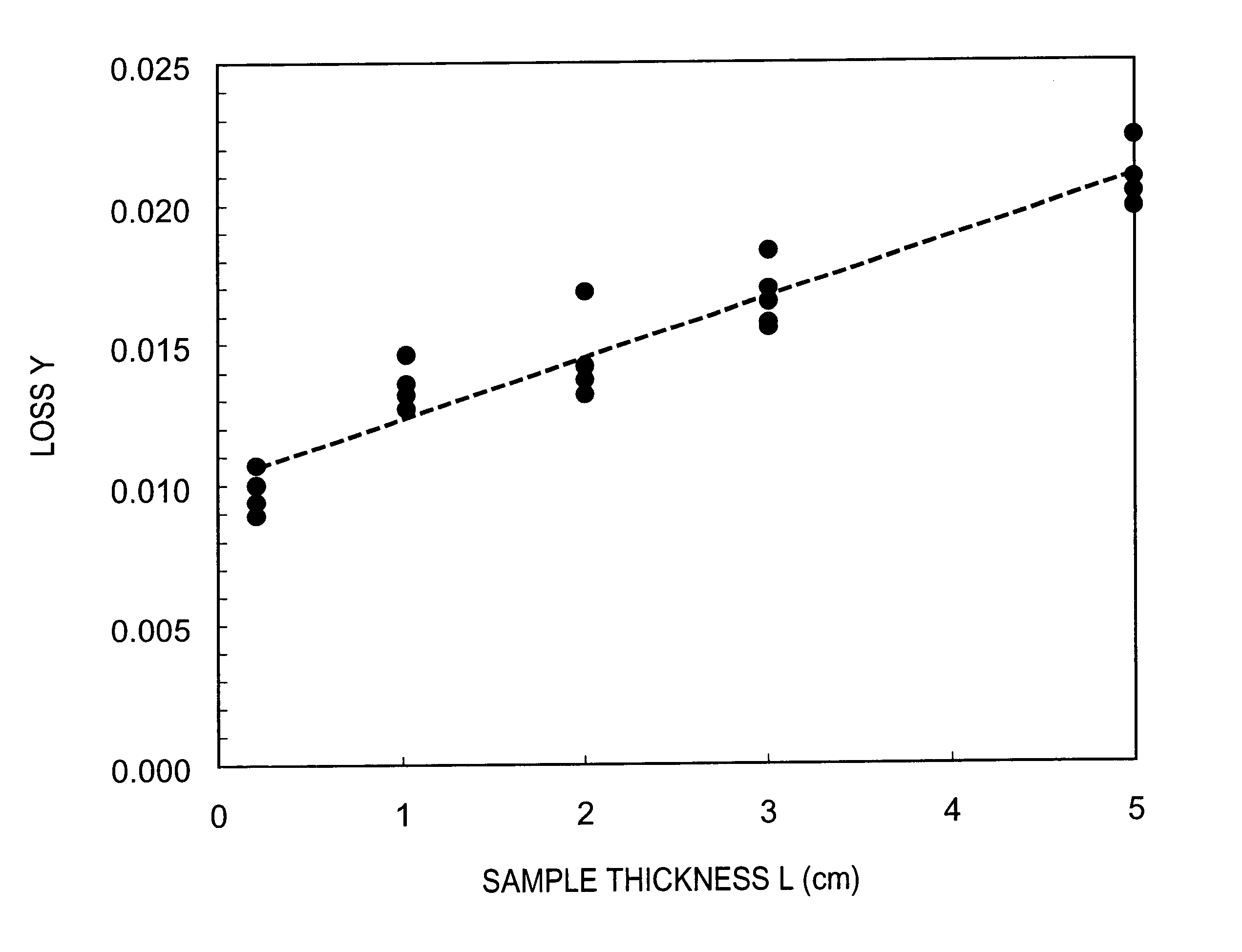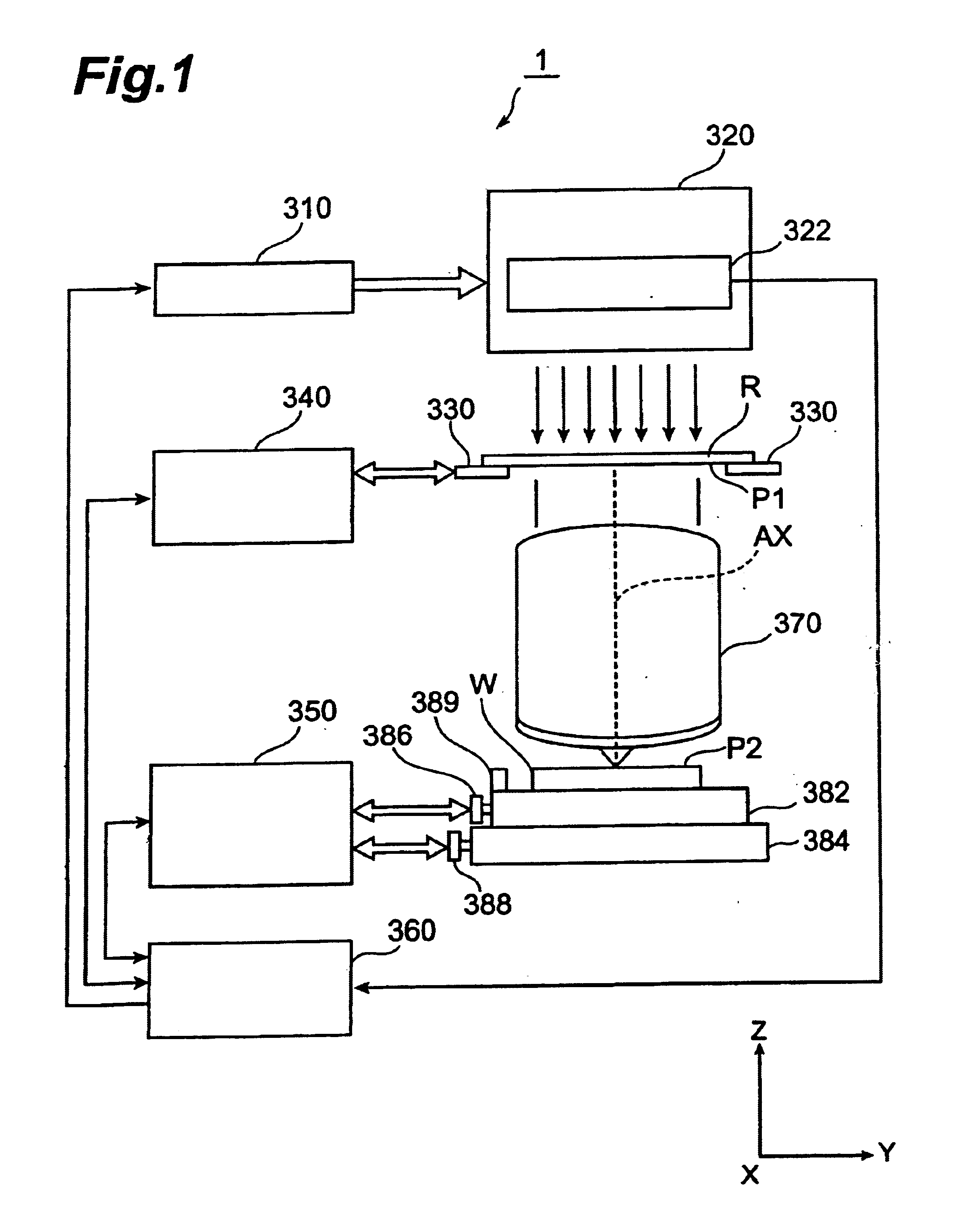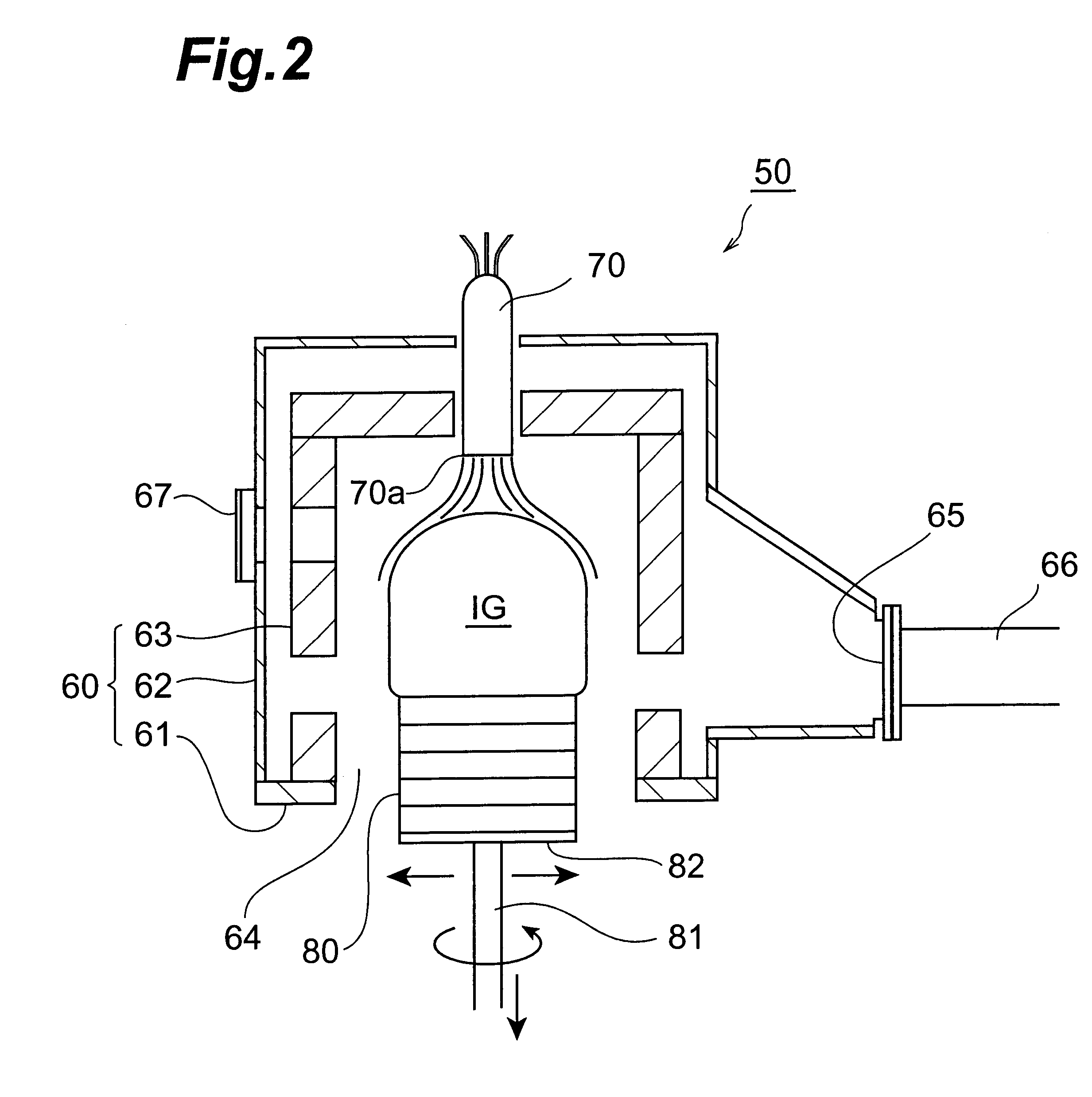Synthetic silica glass member, photolithography apparatus and process for producing photolithography apparatus
a technology of photolithography and silica glass, applied in the direction of photomechanical equipment, printers, instruments, etc., can solve the problems of limited lens materials used in illumination optical systems and projection optical systems, poor light transmittance for practical use, and strict limitations on the use of silica glass members made of silica glass alon
- Summary
- Abstract
- Description
- Claims
- Application Information
AI Technical Summary
Benefits of technology
Problems solved by technology
Method used
Image
Examples
Embodiment Construction
) were in the range of -50%.ltoreq.V.ltoreq.+50%. The hydrogen molecule concentration value variation widths V of the samples of Comparative Examples 1 to 3 were all in a range larger than the range of -50%.ltoreq.V.ltoreq.+50%.
As confirmed by this mounting in steppers, Examples 1 to 9 which had loss factors (initial irradiation absorption) of no greater than 0.0050 cm.sup.-1 after ArF excimer laser irradiation at 1.times.10.sup.4 pulses exhibited performance suitable for practical use, while Comparative Examples 1 to 3 which had loss factors of greater than 0.0050 cm.sup.-1 after ArF excimer laser irradiation did not exhibit performance suitable for practical use. It was confirmed that those with an average hydrogen molecule concentration of 5.times.10.sup.18 / cm.sup.3 or greater as in Comparative Example 3 have a large hydrogen molecule concentration value variation width and a very large loss coefficient after 1.times.10.sup.4 pulse irradiation with an ArF excimer laser.
The hydro...
PUM
| Property | Measurement | Unit |
|---|---|---|
| wavelength range | aaaaa | aaaaa |
| wavelength | aaaaa | aaaaa |
| specific wavelength range | aaaaa | aaaaa |
Abstract
Description
Claims
Application Information
 Login to View More
Login to View More - R&D
- Intellectual Property
- Life Sciences
- Materials
- Tech Scout
- Unparalleled Data Quality
- Higher Quality Content
- 60% Fewer Hallucinations
Browse by: Latest US Patents, China's latest patents, Technical Efficacy Thesaurus, Application Domain, Technology Topic, Popular Technical Reports.
© 2025 PatSnap. All rights reserved.Legal|Privacy policy|Modern Slavery Act Transparency Statement|Sitemap|About US| Contact US: help@patsnap.com



